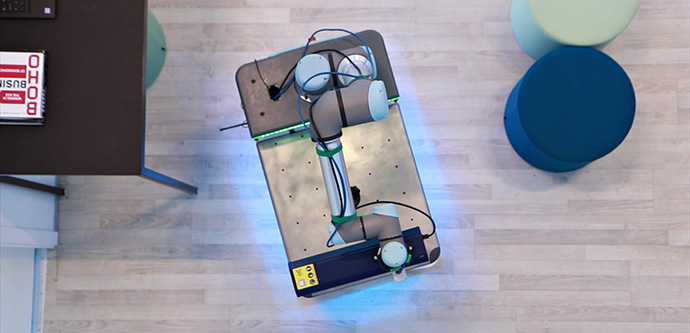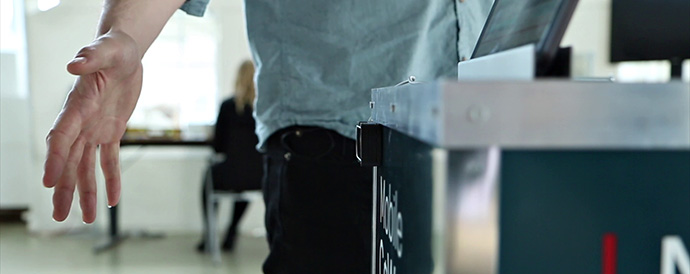Five technologies that could pave the way for more robots in hospitals
Robots and automation solutions are an important part of the healthcare system of the future. An expert from the Danish Technological Institute (DTI) points out several technologies and functionalities that will be crucial for robots to make a difference in hospitals.
Few people doubt that the country's hospitals are running full out. There is great need for automated solutions so that staff can be released for primary care and nursing.
Robot specialist Kasper Camillus Jeppesen from DTI takes a closer look at some of the technologies that can catalyse uptake of helpful robots in the healthcare sector.
Common to most of the highlighted technologies is the concept of Human-Robot Interaction (HRI) - a multidisciplinary field that revolves around deepening interaction between humans and robots and involves areas such as robot technology, design, artificial intelligence, and psychology.
Increasing automated solutions in hospitals require technologies that enable robots to…
1) Understand their surroundings
It is extremely important that robots in hospitals understand their surroundings. Not only the layout and geometry - that is, what the world looks like - but also the characteristic behaviours of what is in it, for example: staff, patients, visitors, hospital beds, other robots, fixed and moveable equipment.
The robots of the future in the healthcare system must therefore be able to relate to a changing world more independently than now and make sensible "independent" decisions.
Technologies such as sensors, cameras, laser scanners, and also artificial intelligence are really important, so that the robots can recognize objects and act in relation to them.
2) Communicate their intentions
One of the major challenges in getting the robots accepted by people in hospitals is to have them solve tasks in the same way that a human would have done – especially in the so-called "last meters" of any task which involves a person.
This interaction between human and robot is important and must be good and trustful.

It is important when the robots run among people such as visitors and patients who do not know what to expect, that the robot can communicate their intentions.
This communication can be through light, sound, shapes, movement, which signals whether the robot is about to turn, what else they intend to do, where they intend to drive, speed changes and many more.
3) Adhere to social norms
Of course, the robots in the hospitals must also comply with the social norms that people are used to.
For example, not driving between people who are standing and talking, or approaching the person that they wish to interact with from the front. But it is also in relation to how fast the robots are allowed to move, how close they are allowed to get to humans, and what path they must take around when passing different types of people.
4) Be controlled without touch
Most often, the robots will function autonomously, but sometimes manual or semi-manual control will be preferable – especially when minimizing the spread of infection.
This control could be via voice control, or a vision system that interpret a person’s hand or arm movements, but it could also be that the robot simply follows its assigned member of staff.
There will be scenarios where the people know things that the robots do not know, and therefore this collaboration is important.

5) Move safely
The safety of humans around robots is always paramount, but especially in hospitals. This is because there is a high probability of meeting extra-vulnerable and distracted people in the corridors.
Some of the technologies we have from industrial robotics are good enough to work in hospitals, but many are not. Therefore, there is a great need for new thinking about existing technologies and inspiration regarding other technologies. There is good potential in using existing industrial technologies as the basis for hospital robots.
Want to know more about robots for the healthcare sector and welfare technology? Then contact Business Manager Birgitte Østergård Sørensen from DTI at bso@teknologisk.dk or 72 20 15 25.